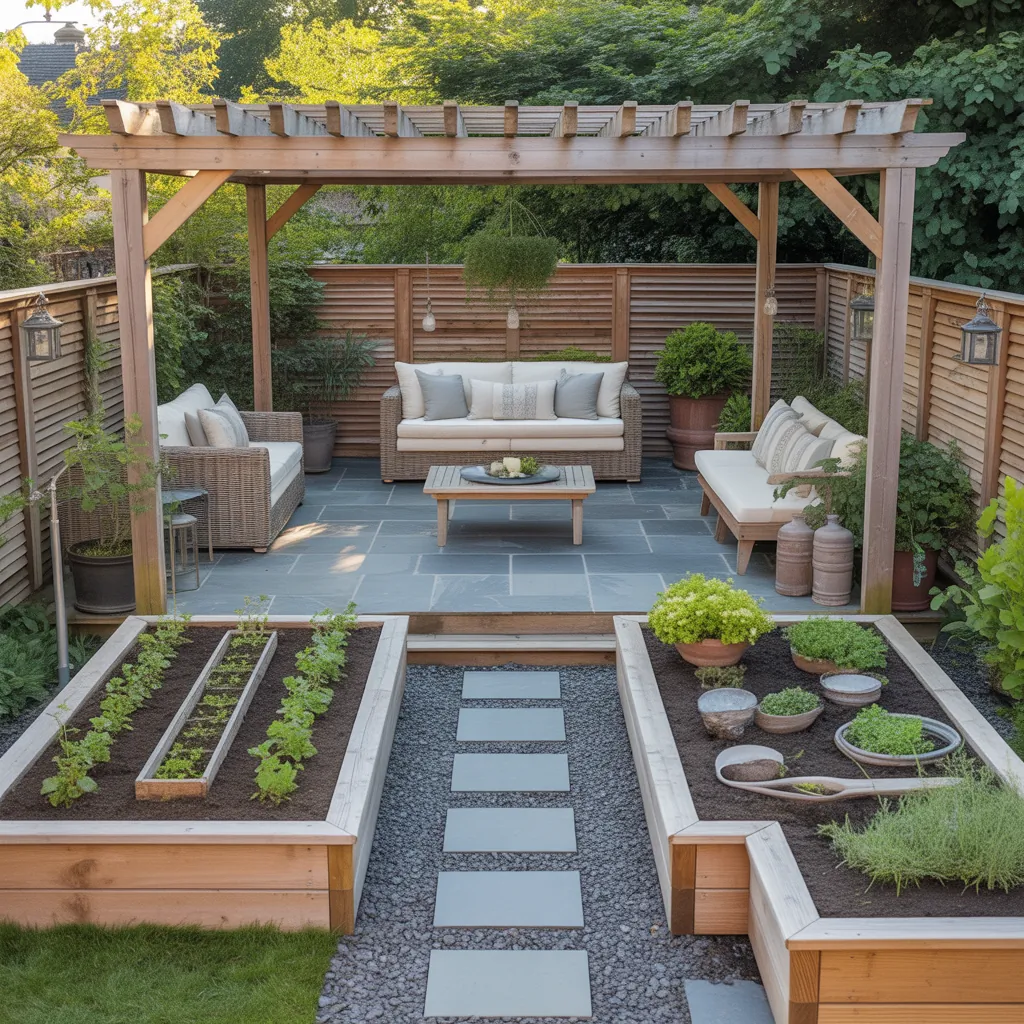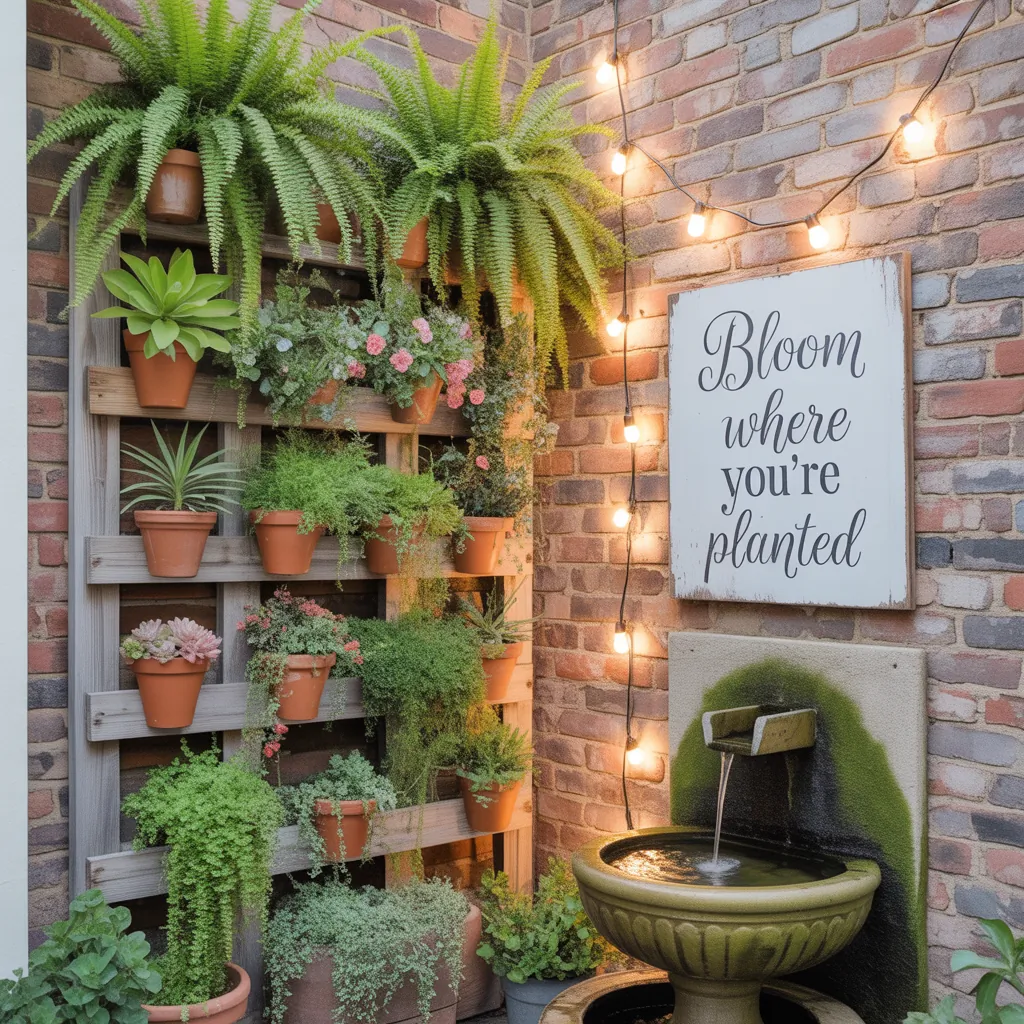Have you ever stood in your backyard with a cup of coffee, dreaming of a beautiful outdoor space — but feeling overwhelmed by where to start? Maybe you’ve tried a border of mismatched plants, or a patio that doesn’t quite flow with the lawn. If your next weekend project is to design a usable, beautiful garden, this guide to outdoor garden schemes layout will give you clear steps, creative inspiration, and DIY tips so you can stop hesitating and start building.
Why a Good Layout Matters — and How to Think Like a Designer
A smart garden layout makes your outdoor space more functional and enjoyable. Whether you want a social patio, a vegetable plot, or a wildlife haven, planning first saves time and money. Think of layout as the spine of your garden — once it’s right, planting and furnishing become easy. In this section you’ll learn how to assess the space, identify zones, and choose a style that suits your home and lifestyle.
Outdoor Garden Schemes Layout: Step-by-Step Planning
Follow this simple process to create a garden layout that works for your site and budget.
- Measure and map: Sketch your yard to scale (even roughly), noting boundaries, existing trees, sun/shade patterns, slopes, drainage, and access points.
- Define zones: Decide on functions — dining, play, growing, relaxing, and storage. Assign approximate square footage to each zone.
- Choose a focal point: A tree, water feature, sculpture, or pergola creates direction and anchors the design.
- Pick a dominant style: Formal geometry, cottage planting, modern minimalist, Mediterranean, or wildlife-friendly will influence materials and plant choices.
- Create flow: Use paths, sightlines, and level changes to connect zones. Keep main routes 3–4ft wide for comfortable movement.
- Plan in phases: Split the project into manageable DIY steps — hardscaping first, then planting, then accessories and lighting.
Popular Garden Schemes and Layout Ideas
Below are practical layouts withDIY-friendly tips to help you implement them on a weekend or over several months.
1. Formal Garden Layout
Best for symmetry and structure. Use straight paths, clipped hedges, and repeating planting blocks. DIY tips: install simple edging with reclaimed sleepers, and buy young plants to keep costs down.
2. Cottage Garden Scheme
Layered, informal planting with flowers, herbs, and kitchen beds. Great for softening walls and creating sensory interest. DIY step: create mixed borders with perennials at the back and annuals at the front for instant color.
3. Modern Minimalist Layout
Clean lines, simple materials, and low-maintenance planting. Use gravel, concrete pavers, and architectural grasses. DIY pointers: lay pavers on compacted crushed stone for a cheap, stable surface.
4. Small Garden & Patio Layouts
Maximize space with vertical planting, container gardens, and multi-use furniture. A corner bench with built-in planters creates seating without crowding the area. DIY hack: repurpose pallets into vertical planters—fast and budget-friendly.
5. Wildlife-Friendly and Sustainable Schemes
Include native plants, a small pond, log piles, and nectar-rich flowers. Composting and rainwater capture keep your garden eco-friendly. DIY tip: build a shallow wildlife pond using a preformed liner and natural stones.
Materials, Costs, and Real-World Advice
Deciding between paving, decking, gravel, or lawn affects both budget and maintenance. Here’s realistic guidance:
- Hardscape first: Build paths, patios, and raised beds before planting to avoid trampling new plants.
- Source materials smartly: Check reclaimed materials for edging and sleepers — attractive and often cheaper.
- Prepare the soil: Test pH and add organic matter. Good soil reduces long-term maintenance and improves plant success.
- Budget in phases: Prioritize functional elements (seating, drainage) and add decorative features later.
Practical DIY Projects for Your Garden Layout
These projects are beginner-friendly and transform layout quickly.
- Build a raised bed: Measure, square the corners, cut timber to size, screw together, fill with topsoil and compost. Great for neat vegetable layout and improved drainage.
- Create a gravel path: Excavate 10cm, lay landscape fabric, compact a base of crushed stone, add decorative gravel and edge with bricks or steel edging.
- Install solar path lights: Easy wiring-free solution to extend usability into the evening and highlight pathways.
- Make a vertical herb wall: Use a wooden frame and pockets or upcycled gutters to save space and add greenery to small areas.
Planting Schemes and Color Ideas
Choose a planting palette that supports your layout: repetitive color and texture unify the design; contrasting foliage creates focal points. For low maintenance, mix shrubs, perennials, and seasonal bulbs. Incorporate evergreen structure for year-round interest.
Maintenance Tips to Keep Your Layout Looking Sharp
- Mulch beds to suppress weeds and retain moisture.
- Prune on schedule — light maintenance each season prevents big jobs later.
- Install drip irrigation to save water and time.
- Observe and adjust: if a path gets worn, widen it; if shade patterns change, swap plants accordingly.
Frequently Asked Questions
1. How do I start designing an outdoor garden schemes layout on a small budget?
Begin by measuring and zoning the space, then prioritize low-cost, high-impact elements: gravel paths, raised beds, and container planting. Reuse materials and phase the work over time to spread cost.
2. What plants work best for a low-maintenance garden layout?
Choose hardy perennials, drought-tolerant shrubs, and native plants that suit your climate. Evergreens and ornamental grasses reduce seasonal replanting. Group plants with similar water needs to simplify irrigation.
3. Can I design a garden layout that supports both entertaining and growing food?
Absolutely. Divide the space into entertainment and productive zones, connected by paths. Use raised beds near the kitchen for easy harvesting and a patio area for dining. Layering functions increases usability without clutter.
Conclusion — Ready to Build Your Outdoor Garden Schemes Layout?
Designing a successful outdoor garden schemes layout is a blend of planning, style choice, and phased DIY work. Start with a simple sketch, pick one or two weekend projects (like a raised bed and a path), and build from there. With small, confident steps you’ll create an attractive, usable garden that fits your life and budget.
Want more hands-on ideas and step-by-step tutorials? Check out our DIY projects and explore different home design ideas for inspiration. Ready to get started? Grab a tape measure, sketch your plot, and make this weekend count — your new garden is waiting.
Call to action: Try one DIY project this month and share your progress — you’ll be amazed how quickly a thoughtful outdoor garden schemes layout can transform your home.



